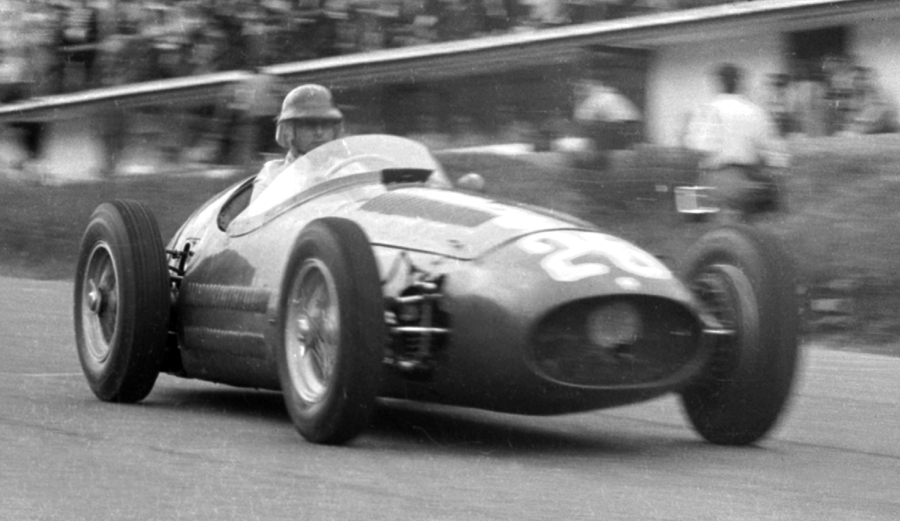- German Grand Prix
Fangio's second title marred by Marimon death

Season's results | Drivers' Championship
Mercedes finally returned to racing and the "blank cheque" operation set new standards. Juan Manuel Fangio and his wonderful W196 Silver Arrow were unstoppable. However, Britain found a new star in Stirling Moss.
After two years of Formula Two it was all change for 1954, with the introduction of new 2.5-litre regulations. The big story was the decision by Mercedes-Benz to return to grand prix racing for the first time since the Second World War. The legendary Alfred Neubauer was still at the helm, and he snapped up Fangio to join Hans Herrmann and Karl Kling. The new W196 was a technical marvel, but was not ready until the third race of the year.
Also on the way was Lancia's new D50. The marque hired Ascari and Villoresi to drive it, but it was ready even later than the Mercedes. After two consecutive titles, Ascari effect-ively wasted the season. Fangio was luckier, for he was allowed to start the year in the new Maserati, the 250F. An attractive and effective car, it would be one of the mainstays of grand prix racing for the next few seasons. Ferrari had lost Ascari and Villoresi, but Hawthorn, Farina, Gonzalez and Frenchman Maurice Trintignant were on hand to drive the latest model.
Fangio's decision to start the year in a Maserati was a wise one, for he duly won the opening events in Argentina and Belgium. The first race was a chaotic, rain-hit affair with the track changing several times. Quick in the wet, Fangio won through ahead of the Ferraris of Farina, Gonzalez and Trintignant. Farina led the early laps in Belgium, but when he hit trouble Fangio went by, and headed home Trintignant. Moss showed he would be a force to be reckoned with by taking third.
Mercedes finally appeared at Reims with three of the magnificent W196s in streamlined, full-bodied form. The cars were perfectly suited to the fast track, and Fangio and Kling finished one-two, with Herrmann setting fastest lap. However, Mercedes came down to earth with a bang at Silverstone, for the streamlined bodies did not like the airfield circuit. Fangio finished fourth in his battered car, while Gonzalez scored his second British Grand Prix win.
Tragedy struck at the Nurburgring when Marimon was killed in practice; he was the first driver to die at a World Championship event. Countrymen Fangio and Gonzalez were distraught but, to his credit, Fangio got on with the job and won the race, his Mercedes now using the new open-wheel body.
In Switzerland Fangio led from start to finish. Moss pursued him until retiring, and then Gonzalez took up the challenge. Monza established Moss as a star of the future. His performances had earned him a works Maserati seat, and he led until nine laps from the end when the oil tank split. He would eventually push the car over the line in 11th. Meanwhile, Fangio swept by to win in the streamlined Mercedes from Hawthorn. The Lancia team was finally ready for the last race in Spain. The car showed promise, for Ascari led for ten laps before retiring, and set the fastest lap. Hawthorn went on to score his second win, ahead of Maserati's young find, Luigi Musso. Mercedes had a bad day, and Fangio finished only third. But his second title was in the bag.
Reproduced from The Ultimate Encyclopedia of Formula One published by Carlton Books